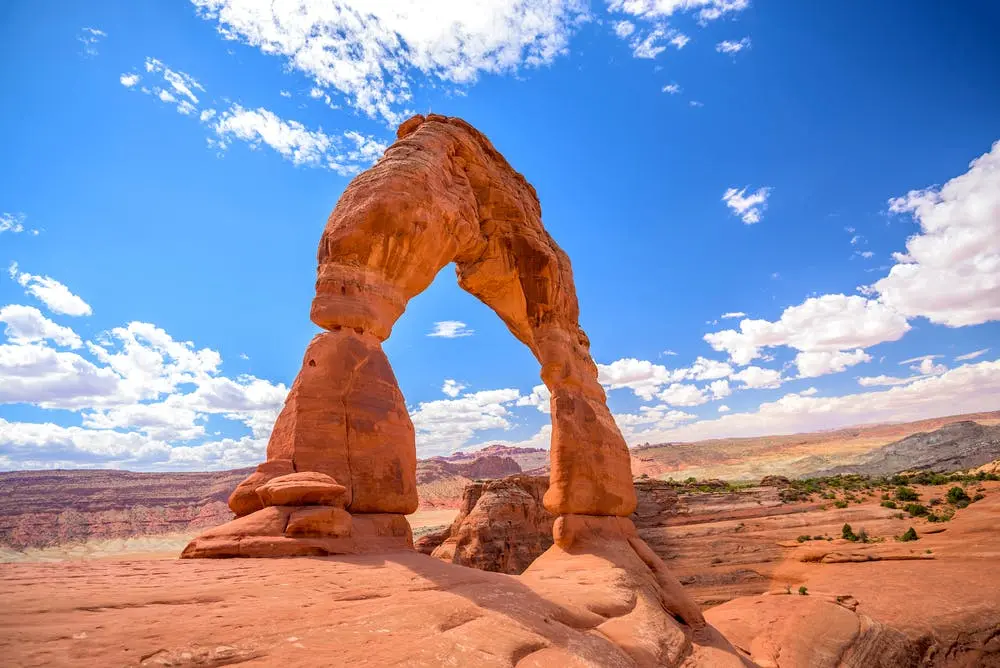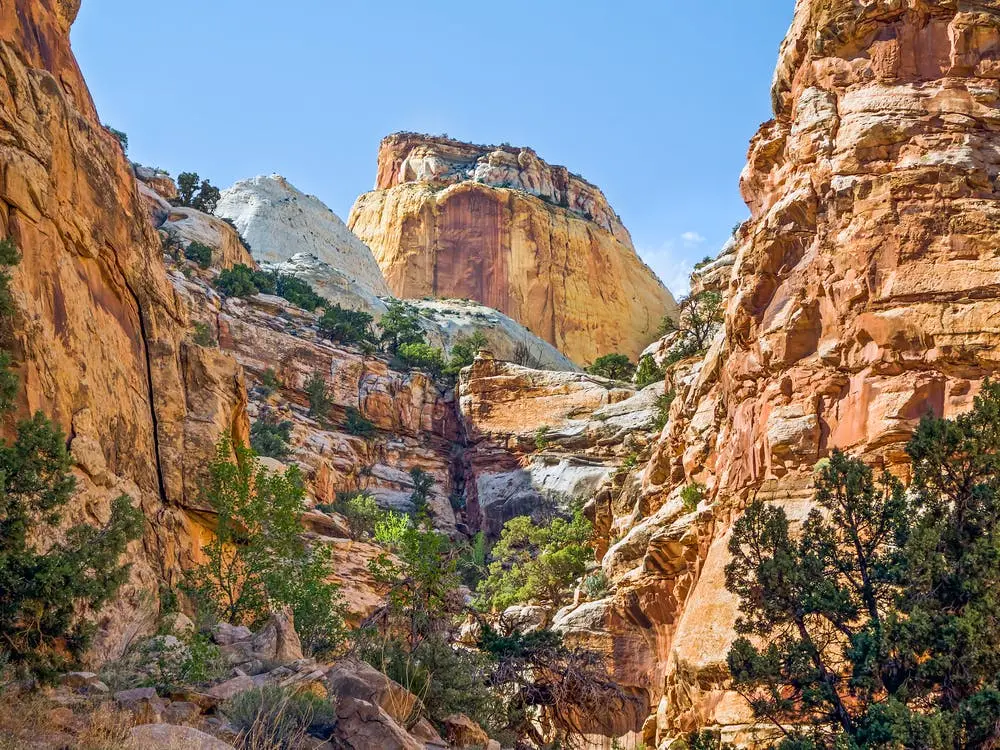Things To Do Near Old Spanish National Historic Trail
The Old Spanish National Historic Trail offers a wide range of places to stop along the trail or drivable route. Attractions, shops, and restaurants can be found not too far from the trail. You also will have the chance to explore across many state lines and see the different types of habitats along the way. Plus, you'll see a variety of wildlife.
 Hiking Trails
Hiking Trails
-
Dinosaur Trail Trailhead
The Dinosaur Trail Trailhead sits in Clayton Lake State Park. It is lightly trafficked, making it the perfect place to enjoy nature. Visitors use the trail for hiking, walking, and educational nature trips.
Location
141 Clayton Lake Road, Clayton, NM 88415
Length
1 mile
Intensity
Easy
-
Mt Eldon Lookout Trail
This hiking trail takes you up a staircase of petrified lava to the mountain's summit 2,300 feet above Flagstaff. It starts as a gradual climb along the Fatman's Loop and increases as you take the Lookout Trail at an incline to the top of the mountain. Near the top of the climb, you'll hike through an area overcome by a wildfire in 1977, giving the perfect view of fresh new groves of aspen trees springing up where pines once stood.
Location
4870, 5098 US-89, Flagstaff, AZ 86004
Length
3 miles
Intensity
Difficult
-
Fortynine Palms Oasis Trail
This out-and-back trail has an elevation gain of 300 feet. As you head up and over the ridge, you'll see barrel cactuses along your pathway. Beyond the ridge, you will hike toward a beautiful fan palm oasis in a rocky canyon.
Location
Fortynine Palms Canyon Road, Twentynine Palms, CA 92277
Length
3 miles
Intensity
Difficult
 Sightseeing
Sightseeing
-
Sunset Crater Volcano National Monument
Around 1085, the ground began to shake, spewing lava high into the air and creating major destruction. By the time the eruption finished, the landscape had changed in many ways; for one, the cinder cone around the rim of the volcano that blew became a dusky red color. Tourists generally drive through the 34-mile scenic loop winding from Highway 89 to Sunset Crater Volcano and Wupatki National Monuments to learn its history.
Location
6400 US-89, Flagstaff, AZ 86004
-
Havasu National Wildlife Refuge
Havasu National Wildlife Refuge was established to maintain the habitat necessary to protect wildlife species headed toward extinction. It's a birding hotspot with well over 318 bird species, including the summer tanager and yellow-billed cuckoo. On the refuge, you may see waterfowl descend into Pintail Slough, a restored wetland, or possibly coyotes, foxes, and bobcats crossing the roads searching for their next meal.
Location
317 Mesquite Avenue, Needles, CA 92363
-
Calico Ghost Tours
Stroll through this historical ghost town and stop at some of the buildings along the way to learn its history. The tours are created to entertain those who may or may not believe in paranormal activity. All guided tours are about 60-75 minutes long.
Location
36600 Ghost Town Road, Yermo, CA 92398
 Museums
Museums
-
Ash Fork Historical Society Museum
Stop in at the museum, and learn how Route 66 changed the lives of everyone who lived in this small town. The old fire truck, vintage cars, and other memorabilia showcase a time of history when this town was thriving. Among the exhibits, you'll see a complete row of old jail cells originally from the Yuma territorial prison. The museum is free to explore, but any donation provided is always a great help in keeping the museum running smoothly.
Location
901 Old Route 66, Ash Fork, AZ 86320
-
New Mexico Military Museum
The museum provides knowledge about New Mexico's military, and the staff works hard to preserve history, artifacts, and documentaries of the Santa Fe area. In 2021, two more exhibits were added. The first exhibition focuses on the Battle of Glorieta Pass; the second display showcases amazing art pieces created by veterans. Other exhibits feature New Mexico's Civil War, WWI, and military history.
Location
1050 Old Pecos Trail, Santa Fe, NM 87505
-
El Monte Historical Museum
The El Monte Historical Museum is filled with unusual artifacts celebrating this remarkable city's heritage. The tours take you through the museum while your guide shares El Monte's rich history. Cultural arts and leisure classes are also offered at the museum.
Location
3150 Tyler Avenue, El Monte, CA 91731
 Nearby Shops and Restaurants
Nearby Shops and Restaurants
-
Palacio Café
This unique café serves delicious Mexican cuisine for breakfast and lunch as well as traditional American favorites. Salads are also offered during lunch hours.
Location
209 East Palace Avenue, Santa Fe, NM 87501
-
The Crown Railroad Café
This café has persevered over the years even when it was sold, restored, and renovated. Today, it stands tall with delicious food choices for breakfast, lunch, and dinner.
Location
3300 West Historic Route 66, Flagstaff, AZ 86004
-
Nice Kicks
Nice Kicks has collaboration with Amoeba Music and New Balance, bringing customers a great combination of products. The latest is a pair of New Balance 992 sneakers with a color scheme that recognizes the music retailer's logo, signage, and design. T-shirts, sweatpants, shorts, and hoodies are a few of the clothing items sold here.
Location
862 S. Main Street, Los Angeles, CA 90014


